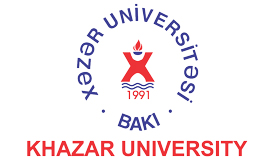International Conference on Materials Science and Research
November 16-18, 2017 Dubai, UAE
Efficient and Stable Semiconductor/Liquid Interfaces for Solar-to-Fuel Conversion
Department of Chemical and Environmental Engineering, Yale University, USA
Analogues to thin-film solar photovoltaics (PV), a typical solar-fuel device consists of a hybrid inorganic-polymer composite that directly converts solar energy into H2 or liquid fuels, with inputs of sunlight, water and CO2 only. Once abundant and low-cost solar H2 is produced as a universal energy carrier, we can use it to convert synthetic or bio-fuels, upgrade petrochemical feedstock, improve combustion and produce ammonia. However, achieving such an efficient and flexible solar-fuel membrane is not trivial, particularly due to the instability of efficient semiconductor/liquid interfaces.
In this talk, I will first discuss several key advances of protective coatings as a stabilization strategy. All technologically important semiconductors so far like Si and GaAs photocorrode. Although protective coatings are not prevalent in solid-state research, they are essential in the field of photoelectrochemistry. With protective coating strategies, a 10% efficient water-splitting prototype has been demonstrated. With modeling-inspired materials design, I will show a viable pathway beyond 20% efficiencies. Finally, I will discuss neededunderstanding of photocatalytic processes at solid/liquid interfaces.A membrane-less photocatalyst design and its novel photochemistry promises efficient and low-cost solar-to-liquid fuel production.
Biography:
Shu Hu is an Assistant Professor of Chemical & Environmental Engineering at Yale University. He is also affiliated with the Energy Science Institute at Yale West Campus. Shu Hu graduated from Tsinghua University in 2006 and received his PhD degree of Materials Science and Engineering in 2011 from Stanford University, where he worked on nanoscale germanium-silicon crystal growth and epitaxy control. He was then a postdoctoral scholar at California Institute of Technology and Joint Center for Artificial Photosynthesis.His work spans fundamental and applied research areas in nanophotonics, nanoscale group III-V growth and solid-electrolyte interfaces for artificial photosynthesis. The experimental demonstration of protective coatings was highlighted in major media including NPR News, Scientific American, CE&N News, and Nature.



